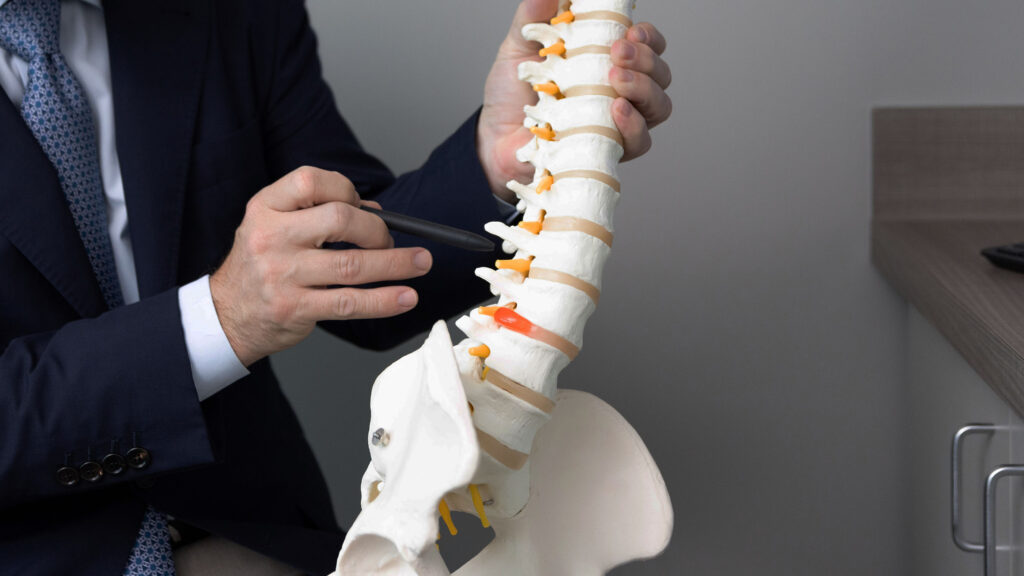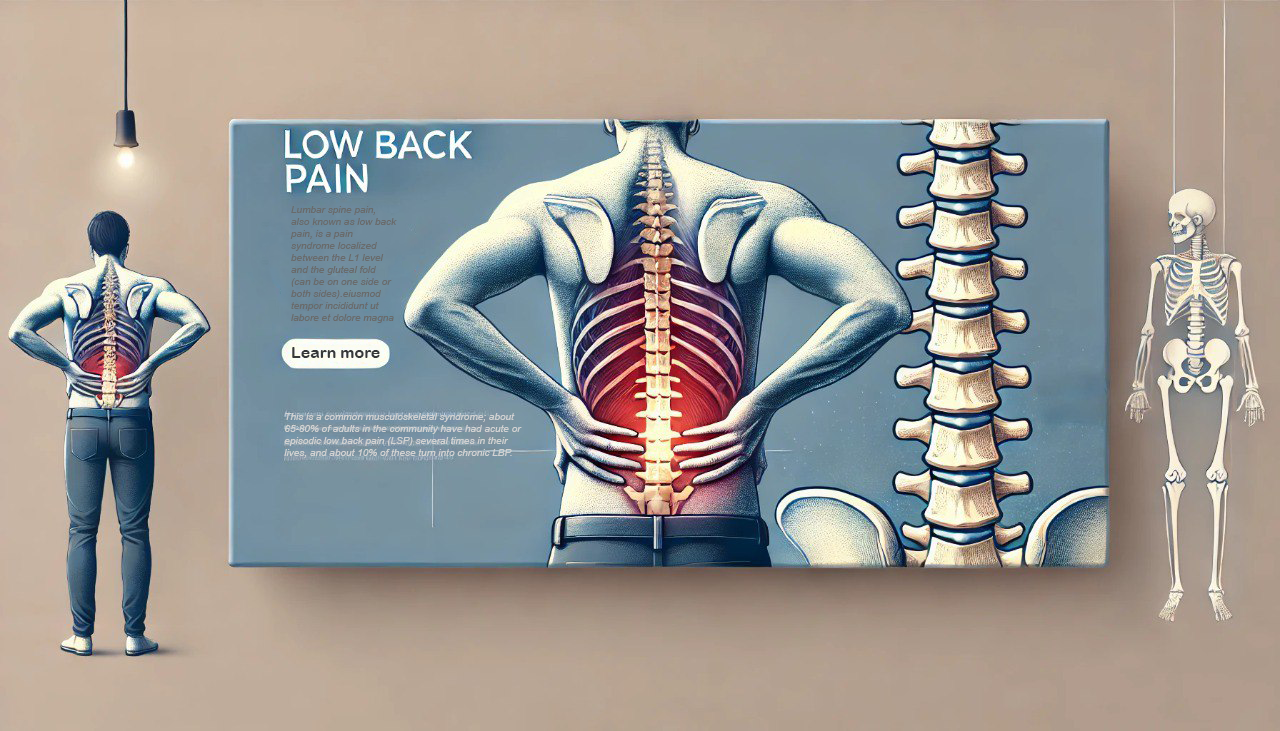Definition of low back pain
Lumbar spine pain, also known as low back pain, is a pain syndrome localized between the L1 level and the gluteal fold (can be on one side or both sides).
This is a common musculoskeletal syndrome; about 65-80% of adults in the community have had acute or episodic low back pain (LSP) several times in their lives, and about 10% of these turn into chronic LBP.
Causes
- Lumbar spine pain due to mechanical causes, common causes due to
- Excessive stretching of muscles and ligaments next to the spine, trauma during activities
- Spinal degeneration
- Herniated disc lumbar spinal
- Slippage, collapse of the vertebral body, vertebral body deformity (lumbar sacralization 5, lumbar sacralization 1),
- Primary osteoporosis
This type has a benign course, accounting for 90% of cases of lumbar spine pain.

- Lumbar spine pain due to systemic disease (Lumbar spine pain “symptom”)
- Is a symptom of one of the chronic joint diseases (ankylosing spondylitis, rheumatoid arthritis)
- Or damage to the spine due to infectious causes
- Due to tumors, cancer
- Due to other causes (kidney stones, duodenal ulcers, abdominal aortic disease, prostate fibroids)
Symptom of low back pain
- Lumbar spine pain due to mechanical causes
- It often appears suddenly after one reason: injury, wrong posture, exposure to cold wind, etc.
- There are sharp pain points when pressed, accompanied by local symptoms such as stiffening of the muscles next to the spine, distorted spinal posture, and loss of the physiological curve.
- Pain may be accompanied by numbness radiating down the leg (sciatica), paresthesia, tingling, muscle weakness, sphincter disorders
- Lumbar spine pain due to a systemic disease
- Patients often have other accompanying symptoms such as fever, common signs of infection due to bacterial causes
- Rapid weight loss, increasing pain, and not responding to common anti-inflammatory pain relievers are symptoms suggesting the cause of cancer
- In cases of increasingly severe lower back pain accompanied by signs of shock, pale skin, and anemia, abdominal aortic dissection should be suspected
- Some cases have psychological causes: signs of lower back pain appear after stress due to psychological pressure or excessive physical labor, then turn into persistent chronic lower back pain.

Diagnosis
Diagnosis is based on clinical symptoms. The cause of lumbar spine pain must be diagnosed, which is not always easy. Paraclinical tests support doctors in diagnosis and treatment such as:
- X-ray of the lumbar spine: most images are typical or have lumbar spine degeneration (narrowing of the joint space, vertebral spurs)
- Magnetic resonance imaging of the lumbar spine is indicated when sciatica symptoms occur.
- Blood tests: tests to detect signs of inflammation, phosphorus-calcium balance is usually within normal limits. When symptoms of suspected lumbar spine pain are a symptom of a systemic disease, depending on the cause, other tests (tuberculosis balance, multiple myeloma balance (Kahler’s disease), cancer balance, … are indicated to determine the cause.
Treatment
- General principles
- Treatment according to the cause. The following section only discusses the treatment of the “lumbar spine pain group due to mechanical causes.”
- Combine drug treatment with rehabilitation measures, exercise, and lifestyle changes to protect the lumbar spine.
- Do not abuse surgical treatment, especially in cases of acute or subacute lumbar spine pain.
- Non-drug treatment
- When having acute back pain, you need to rest, lay on a hard bed, wear a support belt when standing or walking for a long time, etc.
- Change your lifestyle, practice the correct posture, and exercise moderately.
- Acupuncture reduces acute and chronic back pain more effectively than drug treatments.
- Acupressure massage helps relax muscles and relieve pain quickly.
- Physical therapy: Electric pulses, shortwave, ultrasound therapy, electromagnetic fields, and back exercises are very effective in reducing low back pain.
- Drug treatment
- Non-steroidal anti-inflammatory drugs (NSAIDs): Meloxicam, Diclofenac, Celecoxib
- Antipyretic analgesics: Paracetamol/Codein.
- Muscle relaxants: Esperisone
- Nerve pain relievers: Gabapentin, Pregabalin
- Corticosteroid anti-inflammatory drugs: Prednisolone, Methylprednisolone
- Surgical treatment
- Surgery is indicated for cases of low back pain due to disc herniation or with spondylolisthesis that has been actively treated with internal medicine for three months but has not been effective, especially in cases of severe pain, with signs of severe root compression (rapid muscle atrophy, sphincter disorders, sensory disorders).
Prevention
We can completely prevent low back pain syndrome by doing the following straightforward things:
- Change your lifestyle: avoid carrying heavy objects, overexertion, incorrect posture, bending over, etc.
- Practice moderate physical exercise: swimming, walking, yoga, etc.
- Practice flexibility exercises for the back release low back pain effective


